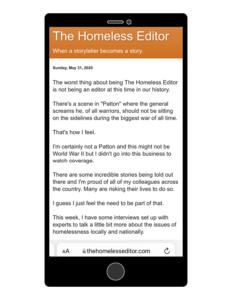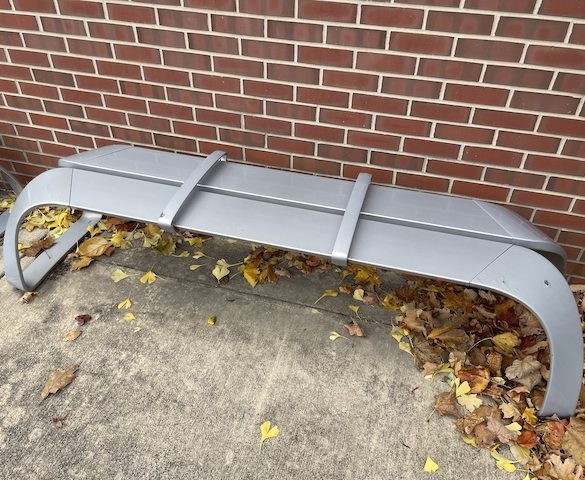There are many misconceptions about the complex issue of homelessness.
Homelessness is often thought of as people sleeping outside, consisting of tents, underpasses, and ragged sleeping bags. However, homelessness is often not quite as black and white.
Rich Jackson lost his job as a senior executive editor at the Bloomington Herald-Times on May 1, 2020. The loss of the job also meant the loss of a company-owned apartment.
According to the United States Interagency Council of Homelessness (USICH), it is estimated that 5,625 people were experiencing homelessness in Indiana as of January 2020. The USICH reported that from 2018-2019, an estimated 18,252 students across the United States experienced homelessness over the school year.
Indiana has one of the lower homeless populations in the United States. The greatest area in Indiana experiencing homelessness is Indianapolis.
The Muncie Mission, a homeless shelter for men, helps provide assistance to families in Delaware County in an attempt to lower the size of the homeless population in Muncie. According to Bob Scott, vice president of development at Muncie Mission, it is estimated that there are 150 to 300 homeless people on the streets of Muncie on any given night. Scott says this number can fluctuate depending on the season.
In Muncie, there is a large number of abandoned homes where homeless people will often seek refuge. According to Scott, Muncie’s homeless population is often not permanent compared to larger cities. It is difficult to know the total homeless population at a given time due to many calculations of the population being based on shelters and people on the streets, according to National Coalition for the Homeless.
National Coalition for the Homeless explains that there are three main categories of homelessness – chronic, transitional, and episodic. Chronic is someone who sees the shelter as their permanent home and has been homeless for at least a year. Transitional homeless are those who go to shelters for short periods before finding stable homes. The last type, episodic, are individuals who go in and out of homelessness with accompanying personal problems, such as mental health, unemployment, and substance abuse.
Rich himself was transitional, with no personal address.
According to Scott, Muncie Mission is launching a new initiative where they buy houses and make them into transitional homes for men. This is a way for them to live away from the shelter while still having support.
A Better Way is an additional shelter for victims of domestic violence and sexual assault in Muncie with a 24/7 crisis line. The Young Women’s Christian Association (YWCA) of Muncie also is available to house up to 65 women, including women with children.
At the peak of the COVID-19 pandemic, there was an eviction moratorium put in place across the country. This restricted landlords from evicting renters who could not afford to pay rent. People were able to be evicted for other reasons, such as not following rules outlined in the lease. Indiana’s order expired with the national order on July 24, 2020, according to the Federal Register.
Another moratorium was put into place by the CDC Aug. 4, 2021 and expired Oct. 3. This moratorium was based on the fluctuation of COVID-19 cases in each county. If a county had a decreasing infection rate then, it could drop the eviction moratorium.
Over the course of the pandemic, $46.5 billion in rental aid has been distributed. In August, letters were sent out to governors, mayors and other offices from Janet L. Yellen, secretary of the Department of Treasury, and others, urging the spending of rental aid money.
COVID-19 presented many challenges in regard to housing. Without eviction moratoriums and rental aid, there is no telling how many more people could have been kicked out of their homes and forced to find new places to live.

“With it being a pandemic, it was incredibly hard to find a job. I was applying to jobs every day and hearing nothing back,” Rich says.
When Rich was trying to find a place to stay, a friend offered him his cabin to stay in for six months. Rich reflects on this experience, as well as many others that came along with being unhoused, in his blog, “The Homeless Editor.”
The blog is Rich’s way to stay connected to his passion for journalism and provides an outlet for him to talk openly about living without a permanent address.
“Complete strangers were trying to help me from my blog. Humans are naturally kind,” Rich says.
When thinking of those without housing, more than just tents, underpasses, and, ragged sleeping bags are to be considered. People like Rich are a testament to the many types of homelessness that are experienced worldwide.
Sources: United States Interagency Council on Homelessness (USICH), USICH, National Coalition for the Homeless, National Coalition for the Homeless, A Better Way, Young Women’s Christian Association of Muncie (YWCA), Federal Register, CDC, U.S. Department of the Treasury, The Homeless Editor
Images: Alison Smith
Featured Image: Kami Geron




